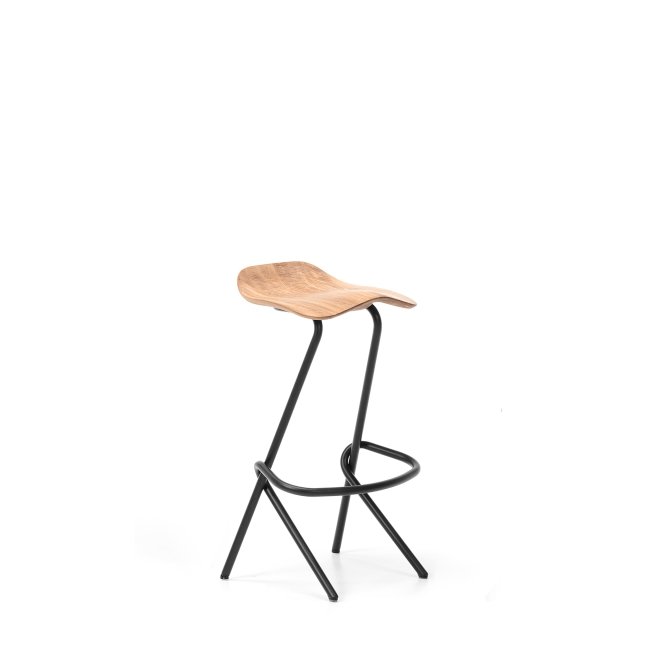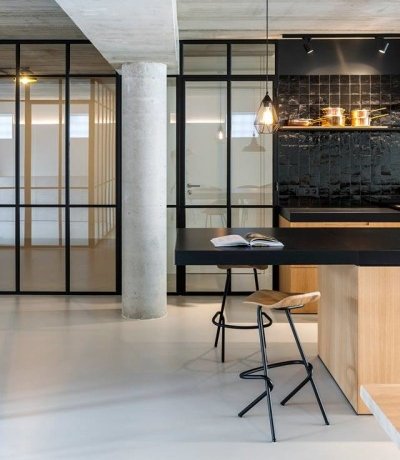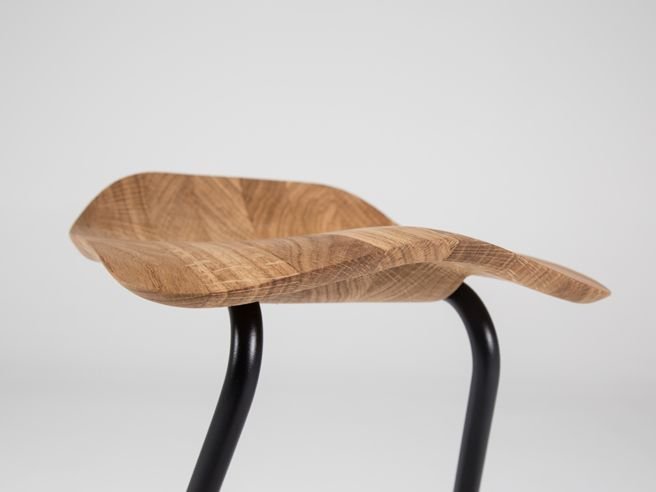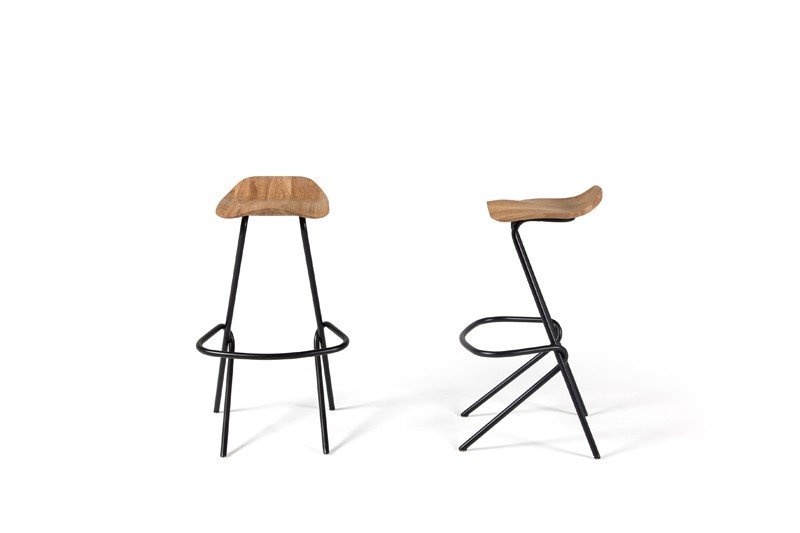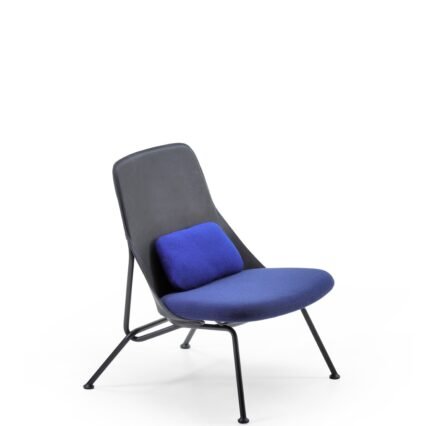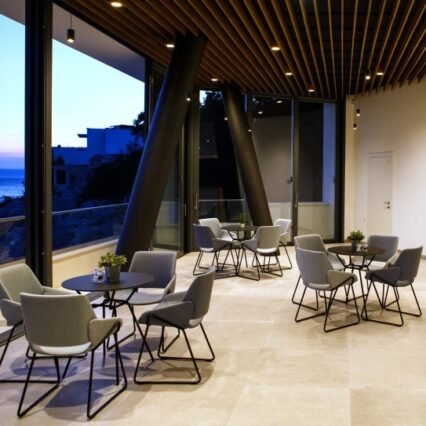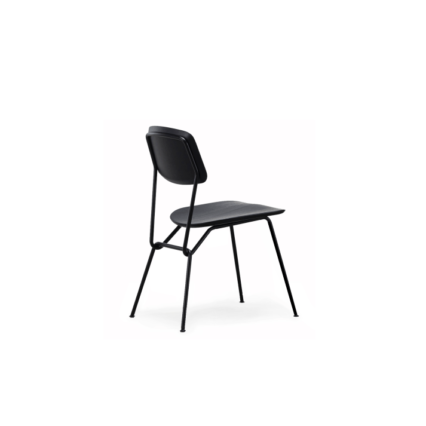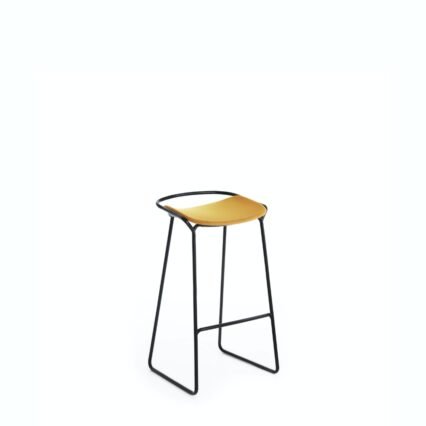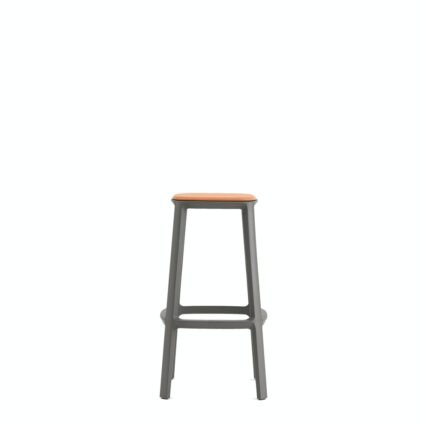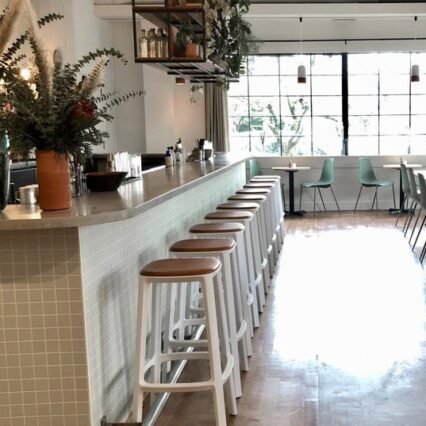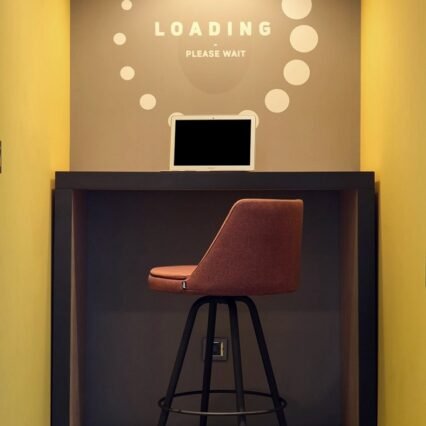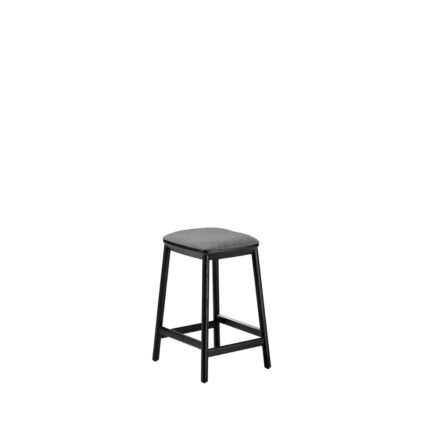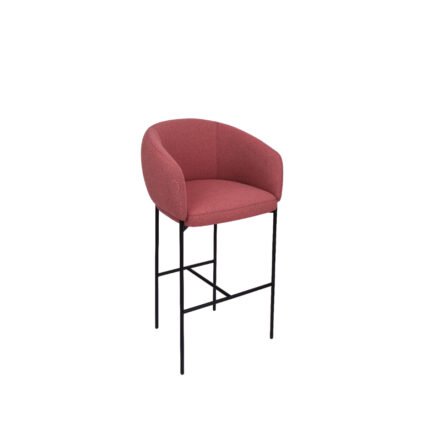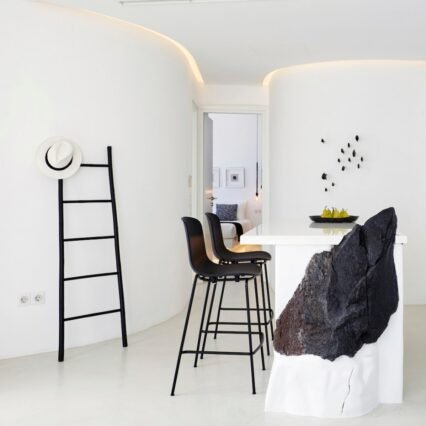strain barstool
Strain Stool | By Simon Morasi Piperčić
The character of a barstool is obtained through the indented form of a seat-shell and interweaving principle of steel tube legs which is actually a signature of the whole Strain collection.
Ergonomically shaped seat, inspired by a saddle, offers various ways of dynamic seating, and it’s made out of solid wood finished with natural oil. The interweaving principle of steel tube legs, in one way, solves the footrest, stiffens the construction, and creates a seat holder.
Available in three heights, the barstool easily adapts to various interior situations of residential or public spaces.
Dimensions
+Click here for dimensions
Materials
Seat solid wood + oil or lacquer
Base metal tube Ø 20 mm + powder coating
Seat Options
+Click here for Strain wood seat options
Metal Frame Color Options
+Click here for the metal frame color options
+ Strain Collection Data Sheet
+ Prostoria Standard Material Option Catalog

Simon Morasi Piperčić
Simon Morasi Piperčić is a Zagreb-based design office that works on various projects ranging from industrial and spatial design to site-specific installations, art direction, and design consultancy.
The studio's distinctive identity lies in the intercultural space between elitism and egalitarianism, exclusivity and inclusiveness, avant-garde experiments, and highly marketable products.
The office has been awarded some of the most prestigious prizes - the German Design Award in 2017, Red Dot in 2013, and the 2015 and Interior Innovation award in 2015. In 2014, he was part of the team that designed the Croatian pavilion at the Venice architecture biennale. His work has been published in several renowned magazines (Dezeen, Domus, Frame, Hypebeast...) and exhibited worldwide.
Prostoria
We tend to perceive furniture as something abstract, created on designers’ desks, and then produced, branded, and placed on the market by companies with different statuses and reputations. In fact, relations inside the contemporary globalized furniture industry are becoming more and more fragmented with less and less opportunity for complete dedication to synergies and collaborations… Prostoria, as a young company whose catalog already comprises some new icons such as the Polygon armchair and the Revolve transformable sofa, stands as an example of a different and more traditional approach based on the evolution from the local factuality and logical clustering of all actors involved in the production process.
The rapid development of Prostoria, formerly known as Kvadra, a company which has come a long way, from “starting from zero” to positioning itself as the leader and promoter of new ideas in only a few years time, is a story about the reintroduction of continuity both in Croatia and Central Europe, a region with vital but insufficiently recognized design scene and remarkable tradition and knowledge of the furniture industry. Those elements served as latent potentials that provided grounds for a continuation and had to be activated.
Since the beginning, Prostoria has been developing an integrative approach, functioning as a collaboration platform that nourishes and stimulates the continuous exchange of knowledge and experience between all the actors participating in the production of furniture. A dynamic workshop ambiance has been created offering opportunities mainly to young designers to explore their ideas in excellent conditions and bring them to the highest level of design, functionality, and technological artisanship. Many products have been developed over long periods of time surpassing a number of iterations until reaching their final form, which would be impossible without adequate support combining the contemporary technology and meticulous craftsmanship and handwork of the highest quality. Predominantly local materials are used, especially solid wood, and most of the production takes place within the company itself or in collaboration with local cooperatives.
While the company’s catalog also offers furniture based on tested models, Prostoria shows strategic and even passionate dedication to research-based design, convinced that authenticity has its place on the market but presents a special challenge in the times when it seems almost impossible to create truly innovative and fresh concepts. For that reason, Prostoria’s social responsibility and specific position have to be observed as a contribution to the evolution of design and readiness to take the risk in order to reach new values for the benefit of users and the culture. Thus, Prostoria stands as a project inside of which designers grow together with the company on the grounds of mutual trust and shared goals.

